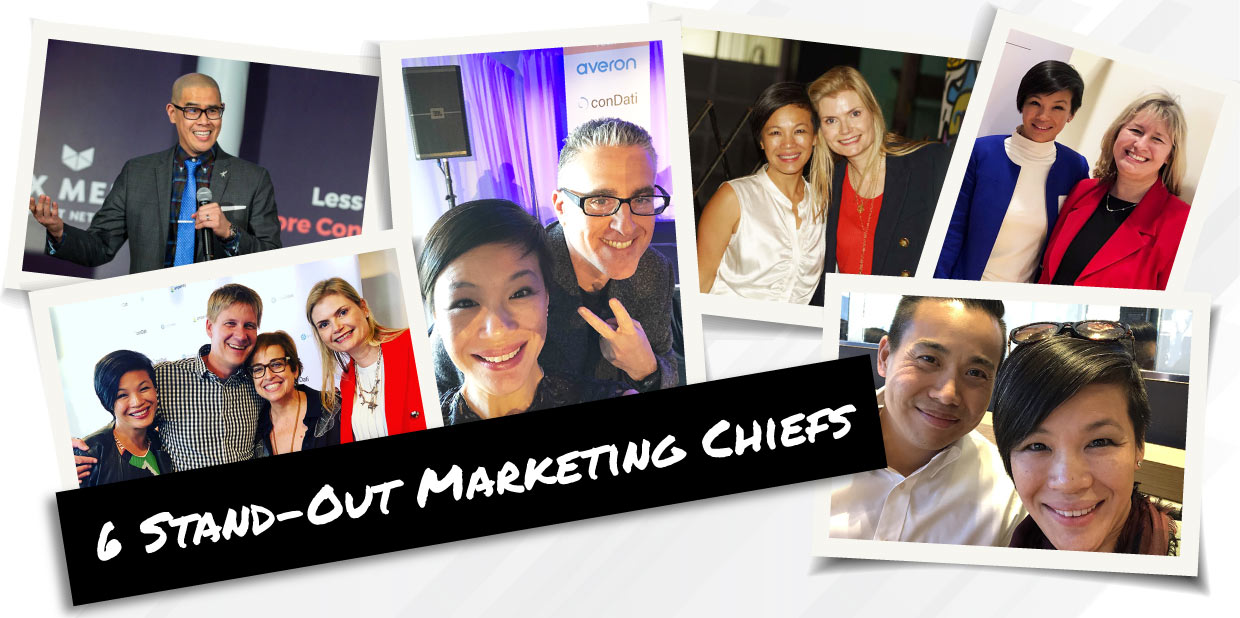How Data Science Has Changed the Game Forever

In this second blog in the series, Through the Data Lens: CMOs Get Real, our esteemed panel of powerhouse CMOs share fresh insights about how marketing data, powered by artificial intelligence (AI) and machine learning (ML), has changed the game forever and plays a key role in driving business growth. I had the privilege of hosting and moderating this group of all-women business-builders recently. Each has earned the right to speak to this topic: they are collectively responsible for driving a combined growth of nearly $30B across their businesses.
The panel included:
 |
 |
 |
 |
| Christy Marble Chief Marketing Officer Visier Inc. |
Elissa Fink Recent CMO at Tableau and current serial Board member and University of Washington Adjunct Professor |
Denise Persson Chief Marketing Officer Snowflake |
Lynn Girotto (providing closing remarks) Chief Marketing Officer Amperity |
In the first blog in this series, Why the Data Surge Is Elevating Our Role, we took a closer look at how “data has our back” as marketing leaders—and how the surge of AI and ML in our martech stack not only helps us more accurately forecast marketing spend as it impacts YoY revenue projections, it’s given us a seat at the table as corporate officers driving business growth. In fact, it’s not uncommon for us to be considered the smartest data person in the room. Added pressure? Yes. Increased confidence based on the data intelligence at our fingertips? Yes. As Elissa Fink shared, “It’s a great time to be a marketer.”
The changing role of data science in our martech stacks
Gartner recently published a blog titled, “So, you’ve finally hired a data scientist.” The article predicts that 60 percent of CMOs will slash 50 percent of their marketing analytics department by 2023. While the role of data scientist is considered a “hot” job right now, the reality is that up to 48 percent of their efforts involve mundane work like data prepping and cleansing, and visualization and reporting. Companies are realizing they can make additional investments in services that free up a data scientist or team to truly focus on needed projects like modeling data scenarios faster for their business.
I asked the panelists about their experience hiring and retaining data science talent for marketing, and where they see the data science trend going for growth companies.
Elissa: “Marketers are not trained data scientists or mathematicians and they don’t have to be. Some problems need to be more informed and have data that works smarter and harder. I think it’s important that marketers have access to the right amount of data science, at the right level, with the right capabilities to make the best decision at hand.”
Christy: “In the world of cloud and SaaS, I’m looking for innovative vendors who can use technology to bring the power of data to the fingertips of every single one of my marketers. I want my marketing team across the board to be focused on return on investment, and to do that they need to own their budget and own their data. I want them to have the power of decision making that helps them steer budget allocation and reallocation to what works.”
Denise: “conDati is a good example of how technology and AI is changing everything. conDati solves an important problem in that you bring a packaged AI solution to marketers. I think technology will continue to simplify and democratize access to data science like this.”
One observation made by all panelists is that companies are each at varying levels of digital marketing maturity when they bring data science capabilities on board, which can impact the pace for achieving growth KPIs. conDati’s DSaaS maturity model is designed to help marketing leaders know where they are on the maturity curve—to maximize the hindsight, insight and foresight advantages of AI and ML data. Our research shows that 80 percent of marketers want to be at level 4 or 5, but 60 percent are still at level 1 or 2 getting their hindsight and insight data bearings. The panelists agreed that for companies like conDati, who tout AI and ML data science solutions, it’s important for us to be strategic partners who can meet marketers where they are on the maturity path; and make the AI and ML solution journey as painless and frictionless as possible.
"conDati solves an important problem in that you bring a packaged AI solution to marketers. I think technology will continue to simplify and democratize access to data science like this.”
—Denise Persson, CMO, Snowflake
What’s in your dashboard?
Similar to the Capital One slogan, “What’s in your wallet?”, I asked the panelists to share the dashboard metrics they most closely track and consider “must haves” in reporting up to senior leadership and the board.
Christy: “I have four key metrics that I religiously follow. They are, 1) the win rate at every stage—from the marketing funnel, to the sales funnel, to the add-on business. Win rate is key because it’s your multiplier and it’s how you get 100% alignment between sales and marketing. 2) I look at average deal size at every stage that I’m able to track it. 3) I look at units and volume in dollars, and, 4) I look at days in cycle. If I have those four—whether it’s in B2B or B2C, that’s the core I need to go in with, and everything else comes from that in terms of applying budget. Those are my rule-of-thumb, must haves.”
Denise: “Pipeline is the most important thing for me—projected to the next quarter and the quarter after that. I also look at self-service registrations for Snowflake, which is like the free trial at other companies. I also look at engagement within our 5000 target accounts, by quarter, and campaign responsiveness and growth. For the Board, I also report what the pipeline needs to be, using different multipliers for new ARR versus growth ARR and renewals. What’s critical to me is that what I’m reporting is consistent from quarter to quarter so the KPIs show trends and gains.”
Elissa: “I look at pipeline by stage, conversion or win rate by stage, and then slice it by segment—including average order size, revenue, and number of deals by segment—because different teams have different goals. I also like to look at what’s happening and working at the program level, to know if our investments are working and where are they delivering in the funnel. The ability to look at the data and crosstab it and slice and segment it—is very powerful. It helps you find the story lines in the data for what works and what doesn’t, and whether to keep or kill marketing programs. Companies like conDati that can help you bring all your data together like this is changing the way we can assess and evaluate.”
This last point by Elissa, about data that helps us decide what marketing programs to start, stop or continue—is especially valuable right now for CMOs and CROs as we plan ahead for 2020. The ability for our scorecards to look backwards and forwards (forecasting) can help all of us set better sales and marketing targets in the year to come.
Watch for our next blog in this series Through the Data Lens: CMOs Get Real, on the topic of All Female CMOs. All Great Advice. The panelists share valuable marketing learnings, offer sage advice to other female leaders and allies, and respond to top of mind questions from the marketing leaders in the audience.

 Download our Maturity Guide: Improve the Return on your Digital Marketing Spend to understand where you are in your digital transformation journey, learn strategies to help you mature your marketing organization, and how to take full advantage of AI and ML through conDati’s data science as a service platform solutions.
Download our Maturity Guide: Improve the Return on your Digital Marketing Spend to understand where you are in your digital transformation journey, learn strategies to help you mature your marketing organization, and how to take full advantage of AI and ML through conDati’s data science as a service platform solutions.



